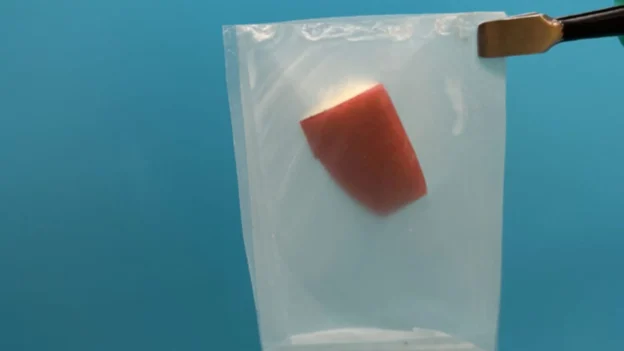Inspired by the structure of leaves, engineers at Washington University in St. Louis have achieved a key breakthrough in the bioplastics industry by developing LEAFF bioplastic, compostable at room temperature and with superior strength to traditional plastics.
Cellulose as the structural heart of the LEAFF bioplastic
The team, led by Joshua Yuan, used cellulose nanofibers to reinforce two of the most widely used bioplastics, polylactic acid polylactic acid (PLA) and polyhydroxybutyrate (PHB). These compounds are derived from renewable sources such as corn starch and have the potential to replace petrochemical plastics. However, until now they have had two major limitations, low mechanical strength and the need for industrial composting.
With the addition of a cellulose core layer between bioplastic sheets, the new biomimetic multilayer design improves stiffness, durability and functionality. The result is a film dubbed LEAFF (Layered, Ecological, Advanced and multifunctional Film).
Key features for sustainable packaging
LEAFF is more than a reinforced bioplastic. In addition to degrading in environmental conditions, it offers an effective barrier against air and humidity, ideal for food preservation. Its surface also allows printing directly on it, reducing production and material costs.
In tests conducted by Yuan’s laboratory, this film outperformed polymers such as polyethylene and polypropylene, two of the most common plastics in the packaging market, in tensile strength.
U.S. drives the future of bioplastics
The United States could capitalize on this development thanks to its agricultural infrastructure, which provides the raw materials to produce these bioplastics locally and competitively. By closing the loop with materials derived from waste and capable of reintegrating into the environment, the LEAFF LEAFF technology is aligned with the principles of the circular economy.
Yuan is now looking for commercial partners to scale this solution, aware that Asian and European institutions are also competing in this field. However, the combination of advanced research, agricultural resources and focus on sustainability positions the U.S. as a potential global leader in this emerging sector.
This new material could become the future standard for plastic products. plastics biodegradable plastic productsredefining packaging from plant science.
Source and photo: University of Washington

